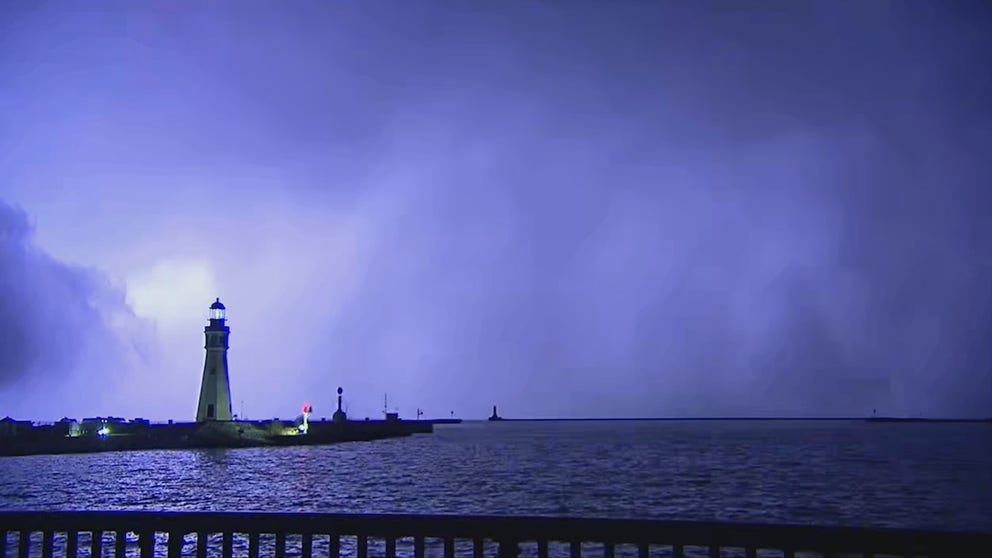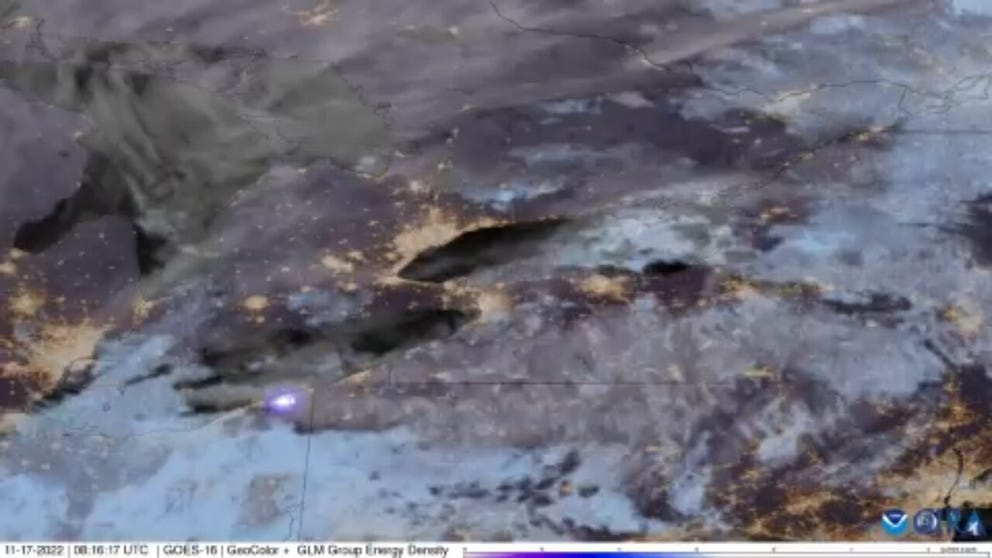What is thundersnow?
Thundersnow can occur anywhere heavy snow is falling, and the NOAA National Severe Storms Laboratory says it can also be observed downstream of the Great Salt Lake and Great Lakes during lake-effect snowstorms
What is thundersnow and why is it unique?
Thundersnow is a rare phenomenon, but it can occur anywhere heavy snow is falling.
Most people associate thunder and lightning with thunderstorms, but you shouldn't be surprised if you hear a rumble or two coming from the sky during heavy snow.
FOX Weather meteorologist Marissa Lautenbacher says while thundersnow is rare, it can happen. Such was the case in January 2022 in Boone, North Carolina, when heavy snow was falling during the first snowstorm of 2022.
WHAT HAPPENS WHEN SOMEONE IS STRUCK BY LIGHTNING
Satellite shows thundersnow across lake-effect snowstorm
GOES-16 satellite imagery shows lightning flashes amid a lake-effect snowstorm that is bringing snow measured in feet to parts of western New York. (VIdeo: NOAA / CIRA)
What causes thundersnow?
Lautenbacher says warm air can be pulled into the snowstorm, which would cause the system to be more convective and unstable.
"The turbulent winds within the storm cause the ice crystals to slam into each other," she said. "This results in a separation of charges in the storm, similar to the static you'll get rubbing your hair onto a balloon. When the charges build up, you'll get enough to create lightning."
Security camera footage obtained by FOX Weather showed what appeared to be thundersnow in New Market, Alabama, some 15 miles northeast of Huntsville, in January 2022, as a rare snowstorm blanketed the Deep South.
BOLTING IT: WHY YOU SHOULD RUSH INDOORS WHEN YOU SEE LIGHTNING OR HEAR THUNDER
Where can you see thundersnow?
Thundersnow can occur anywhere heavy snow is falling, and the NOAA National Severe Storms Laboratory says it can also be observed downstream of the Great Salt Lake and Great Lakes during lake-effect snowstorms.
It's also important to note that while it's exciting and rare to see lightning and hear thunder during a snowstorm – it's still just as dangerous as it would be during severe weather. If you're outdoors during winter weather, and you see lightning or hear thunder, it's best to head back inside, where you can enjoy the snow from the comfort of your home.
Watch: Drone shots of thundersnow over the Buffalo skyline
Incredible drone shots of thundersnow over the Buffalo skyline. Timelapse showing lake effect snow pushing in over the city. One shot resembles a haboob due to the sharp gradient.


